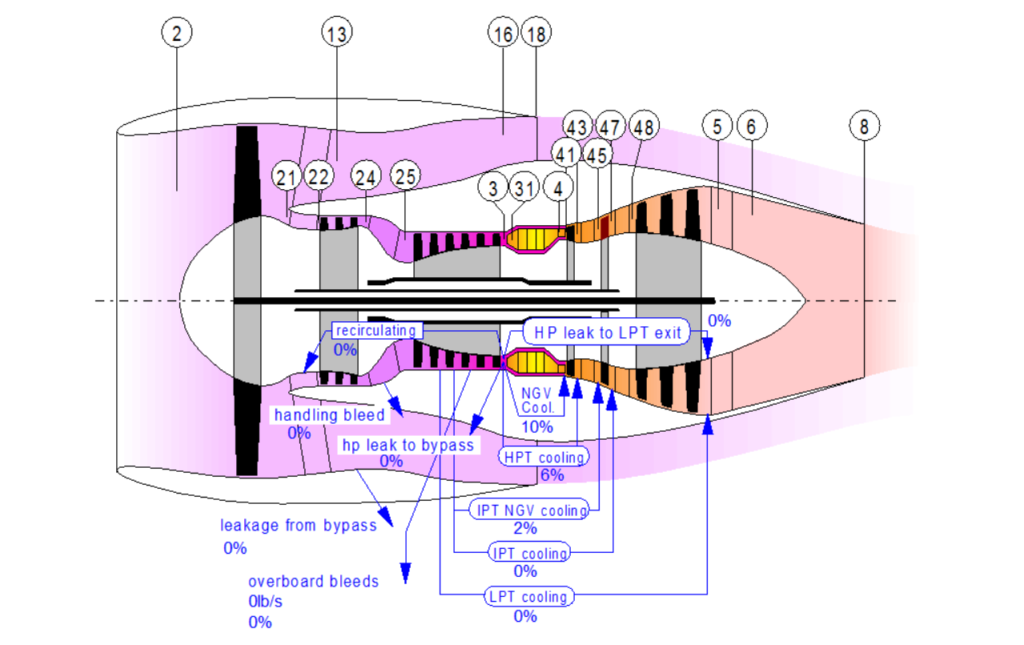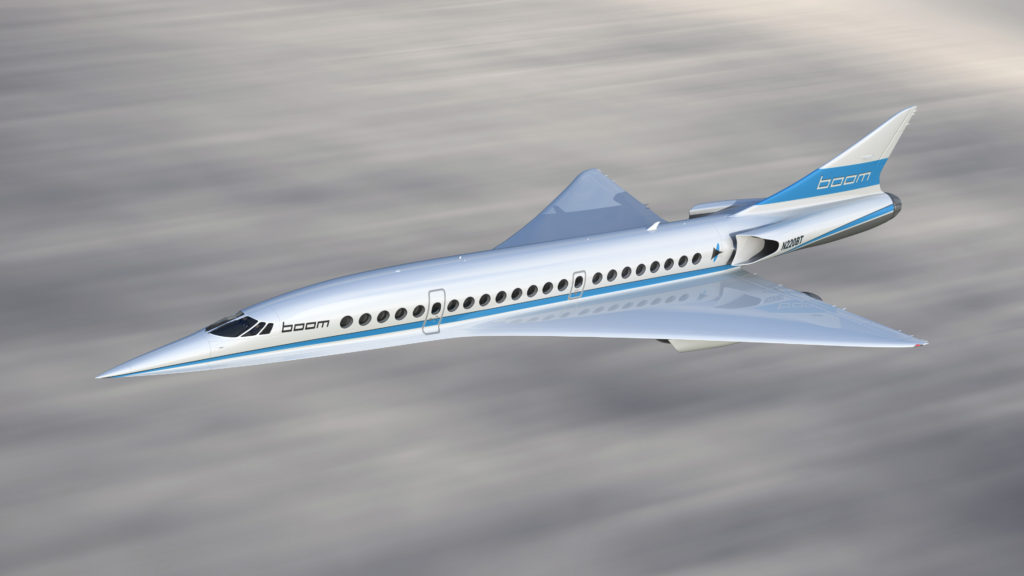Leeham News and Analysis
There's more to real news than a news release.
The Boom SST engine problem, Part 3
By Bjorn Fehrm
Subscription required
Introduction
December 08, 2016, ©. Leeham Co: Boom Technology and Virgin Atlantic plan to offer supersonic business class passenger traffic over the Atlantic. We covered the type of challenges that this poses in previous articles. The most difficult challenge is finding a suitable engine.
We described what type of engine will be required in Part 2 of the series. We will now investigate what thrust this engine must deliver at different parts of the flight envelope.
How “draggy” is supersonic flight? Why did Concorde and the Tu-144 need afterburners for the acceleration to cruise speed?
Summary:
- Supersonic drag forces slender aircraft designs to minimize supersonic drag.
- An SST needs to use a special climb technique to hold this and other drag factors low.
- Passing the sound barrier and supersonic climb is demanding flight phases
- Can a non-afterburning turbofan operate efficiently to master these phases and combat the supersonic drag?
Bjorn’s Corner: Turbofan engine challenges, Part 5
By Bjorn Fehrm
December 02, 2016, ©. Leeham Co: We will now look at the combustor area in our series on modern turbofan engines. There is a lot of activity in this area, as it sets the level of pollution for the air transportation industry for some important combustion products.
We will also finish off the compressor part of our series by looking at the bleeding of cooling air for the engine and for servicing the aircraft with air conditioning and deicing air.

Figure 1. GasTurb principal representation of a three-shaft turbofan like our reference Rolls-Royce Trent XWB. Source: GasTurb.
The amount of air which is tapped from compressor stages for cooling and other purposes can exceed 20% of the core flow (some of the flow paths are shown in Figure 1). At that level, it has a marked influence on the performance of the engine. Read more
The Boom SST engine problem, Part 2
By Bjorn Fehrm
Subscription required
Introduction
December 01, 2016, ©. Leeham Co: Boom Technology and Virgin Atlantic plan to offer supersonic business class passenger traffic over the Atlantic. We covered the number of challenges that this poses in recent articles. The most difficult challenge is finding a suitable engine.
We started the investigation into a suitable engine in the last article. A Supersonic Transport Aircraft (SST) needs an engine which is very different from the latest crop of high-performance airliner engines.
The air entering the engine intake at Mach 2.2 is taken from standing still to a speed of 450m/s within a fraction of a meter. This raises the air pressure and temperature more than the combined intake/fan/low compressor does for a modern turbofan. The result is that the core’s high pressure compressor must adapt; it can’t have a high compression ratio (then things get too hot).
Add to that, that the engine must be slender. It can’t have a wide fan and therefore high by-pass ratio because the supersonic drag of such large engines would be too high.
Summary:
- The SST engine must be based on a core with a low pressure ratio.
- Such cores are no longer available in modern airliner engines.
- One must use cores from the military field of supersonic engines.
- We check what kind of engine can be constructed around such a core.
- Is the Boom SST mission then possible with an engine done with an existing core?
The Boom SST engine problem
By Bjorn Fehrm
Subscription required
Introduction
November 28, 2016, ©. Leeham Co: We covered Boom Technology’s and Virgin Atlantic’s plans to offer supersonic business class passenger traffic over the Atlantic in recent articles. In the first article, we focused on the problem areas that Boom technology must master.
The most difficult area is to find a suitable engine for the aircraft. Engines for long-range supersonic flight are quite different animals than the normal subsonic airliner engine. We will go through why the engines are different and give an example of how such an engine could look.
By creating a concrete example of an SST engine for an aircraft the class of the Boom SST, it will be possible to understand if Boom’s claim that suitable cores are available holds water, and how realistic is it to make an SST engine from these.
Summary:
- An SST engine is very different from a modern engine for a long-range airliner.
- A high-performing long-range engine for a normal airliner has a high bypass and pressure ratio.
- A high-perfoming long-range SST engine for a supersonic airliner has a low bypass and pressure ratio.
- Intakes and exhausts on subsonic engine nacelles are simple.
- Intakes and exhausts on supersonic engine nacelles are not simple.
- Considering all these factors, we will design an engine system for the Boom SST to get a deeper understanding of the challenges involved.
Bjorn’s Corner: Turbofan engine challenges, Part 4
November 18, 2016, ©. Leeham Co: In our series on modern turbofan airliner engines, we will now go deeper into the compressor part. Last week, we covered the fundamentals of compressors. As compressors and turbines use the same principles, we also covered the fundamental working principles of turbines.
We also described that compressors are temperamental parts, which can protest to wrong handling with violent “burps” (burst stalls with the combustion gases going out the front of the engine) or end up in a rotating stall where it simply stops working.

Figure 1. Stylistic cross section of a two shaft turbofan with both axial and radial compressor. Source: GasTurb.
Turbines, on the other hand, are your robust companions. Aerodynamically they just work, albeit more or less efficiently dependent on what one asks them to do (mechanically it can be very different; we recently saw a turbine disintegrate with large consequences on an American Airlines Boeing 767 in Chicago). More on the turbines later.
In the GasTurb cross section of a two shaft turbofan in Figure 1, the engine has both an axial and a radial compressor. We will consider why engine designers combine these two for certain engine types. Read more
Bjorn’s Corner: Turbofan engine challenges, Part 3
November 12, 2016, ©. Leeham Co: In our trip through a modern turbofan airliner engine and its technologies, we looked last week at the engine intake and the fan. We now continue with the compressor parts.
As compressors and turbines use the same principles (but in opposing ways), we will look at these principles this week and how their roles in the engine create their special characteristics.
As before, to make things concrete, we use a GasTurb simulation of a Rolls-Royce Trent XWB 84k engine to look at practical data when needed. As before, I have no specific knowledge about the engine and will not use any data outside what is public information.
The GasTurb cross section of a three-shaft turbofan is shown in Figure 1. We will examine the sections between station numbers (22) and (3) and (4) and (5) in the general discussion of compressors and turbines. We will then look at some data for common compressors. Read more
Bjorn’s corner; Turbofan engine challenges; Part 2
November 04, 2016, ©. Leeham Co: We will now start to go through a modern turbofan airliner engine and look at the technologies which are used and what are their technical challenges. We will start today with the engine intake and the fan.
To make things concrete, we will use a GasTurb simulation of a Rolls-Royce Trent XWB 84k engine. This will provide us with realistic example data for the different parts of the engine. I want to stress that all values are assumed as typical for such an engine. I have no specific knowledge of the Trent XWB and will not use any data outside what is public information.
The GasTurb cross section of a three-shaft turbofan is shown in Figure 1. We will use the station numbers in the figure to navigate the engine and the data from the simulation to understand modern airline engines and their typical data. Read more
Engine industry clamoring for road back
By Bjorn Fehrm
Subscription required.
Introduction
October 13, 2016, ©. Leeham Co: The airline engine industry is like a ticking bomb. Over the years, a business practice of selling the engines under manufacturing cost and planning to recover costs and make a profit on the aftermarket developed. This goes back decades.
The practice was fostered by fierce competition over the engine contracts for aircraft which offered alternative engines. The losses of the engine sales could be made up later by selling spare parts and services at high margins.
These “jam tomorrow” practices have several implications. The engine industry is now confronted with these and wonder how it could put itself in such a bind. How to handle these and what is the way back?
Summary:
- High competition in engine sales forced ultra high discounts for the up-front engine sale.
- Aftermarket schemes was created that should recover profits over spare parts and services.
- But these maintenance practices create all sorts of problems in the used engine market.
- The engine industry now wants to return to more normal business practices. But how do they find the way back?
Bjorn’s Corner: The Chinese aircraft engine industry
October 07, 2016, ©. Leeham Co: In our Corners on East bloc aeronautical industries, we will now look at the Chinese civil aircraft engine industry.
The Chinese engine industry is closely modeled after the Chinese aircraft industry that we looked at last week. It is organized as divisions and later subsidiaries to the major aircraft companies. Contrary to the Chinese aircraft industry, it has had major problems in gaining the necessary know-how to start developing and producing its own designs.
The industry has built Soviet designs on license since the 1950s and only recently managed to present functional own designs, after many failures.





